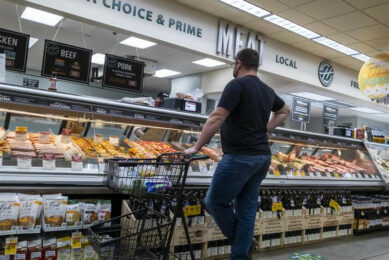Better auditing for the US pork industry

Animal welfare has been the heart of a new US system for credible on-farm verification. First audits are in process in the new Common Swine Industry Audit, in development since 2013. Expert columnist Monique Pairis-Garcia describes this as ‘a huge first step for the US swine industry’.
On-farm swine assurance programmes are still relatively new in the US. In contrast to the legislative approach taken in Europe, promoting and ensuring positive on-farm animal welfare has been driven primarily by requirements set out by US food retailers and food producers. In 2013, the Pork Industry Forum passed a resolution for the development of a ‘consistent, reliable and verifiable system’ to ensure on-farm animal welfare and food safety pre-harvest.
The National Pork Board and US industry stakeholders spearheaded the development of the Common Swine Industry Audit (CSIA) to facilitate a workable, credible and affordable on-farm verification system to be accepted nationally by packers. Over the course of 2 years, the Industry Audit Task Force, made up of US pork producers, packers, veterinarians and animal scientists, developed the audit tool material built from a previous framework developed by the National Pork Board.
The CSIA can be broken down into 7 focus areas which cover:
- Critical criteria
- Animals,
- Caretakers,
- Facilities,
- Records/documents,
- Transport/load-out and
- Pre-harvest food safety.
Based on these categories, a total of 372-424 points can be achieved depending on the type of production facility being evaluated.
Auditors must have swine production knowledge
A little over half of these points are based on animal measures (measures in which the animal on farm is directly assessed) while the remaining points cover records, SOPs, caretaker training and transport. Auditors who will be selected to conduct the on-farm evaluation are required to pass a proficiency test to ensure knowledge on basic swine production and management practices.
Once this test has been passed, the auditor will undergo a 3-day training session conducted by Professional Animal Auditor Certification Organization (PAACO). To date, 1 training session has been completed in May, 2015 and 15 auditors have passed the course. Audits are set to begin January 2016 and several farms have already been audited for the year.
How pigs farms are scored
The main driving force behind the implementation of the audit is through the packer organisations. Decisions related to what constitutes a passing score and what individual farms within each supplier get audited are based on the expectations and demands of the individual packers. Individual packers have set their thresholds based on what they are seeing on their end of the supply chain as well as areas that are important to the mission of the packer and industry. With that, the approach to providing a score is not to compare 1 farm with another farm but provide a measurement in which each individual farm can strive to improve upon.
This is a huge first step for the US swine industry to come together as a group to provide an objective, science-based audit tool that meets the expectations of consumers and is realistic to implement on-farm. The audit will set out to avoid duplication through multiple audits and set a framework for all producers to be assessed on, regardless of farm size, geographic location or production system.











